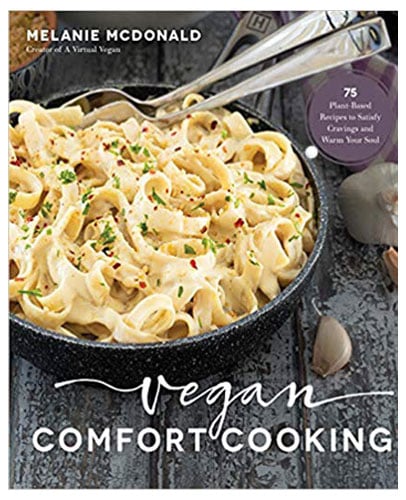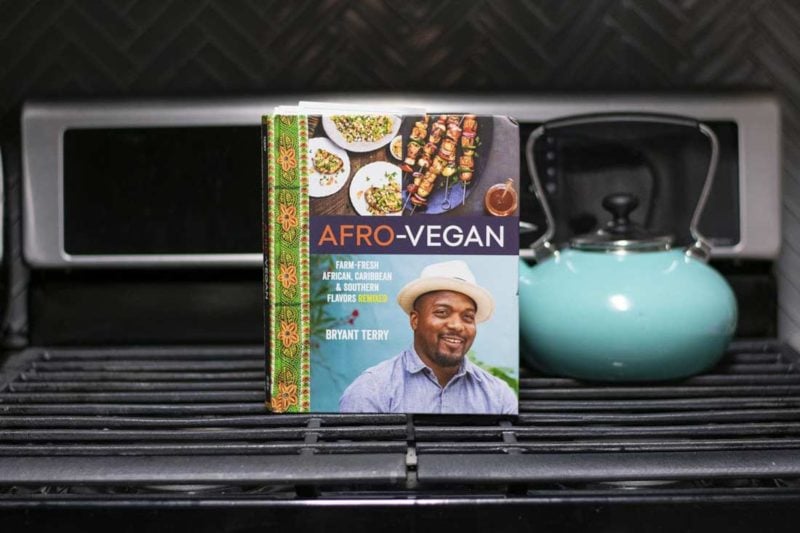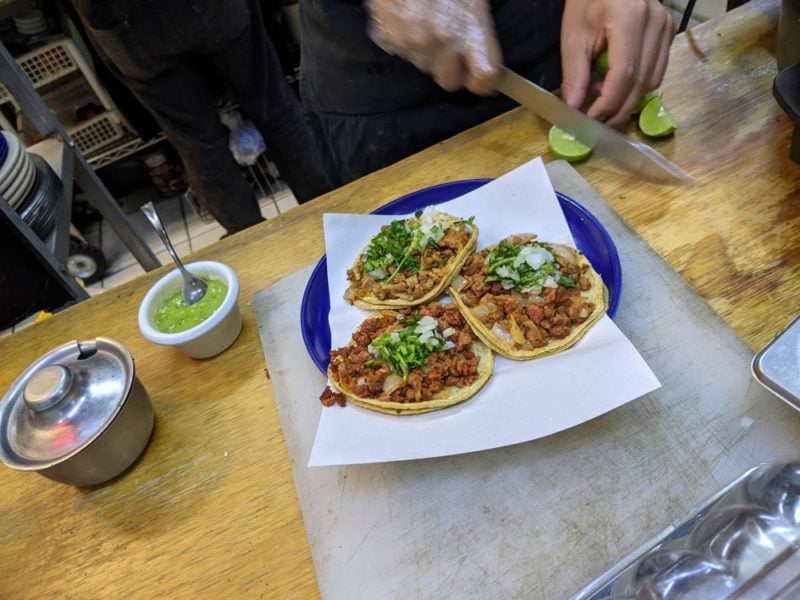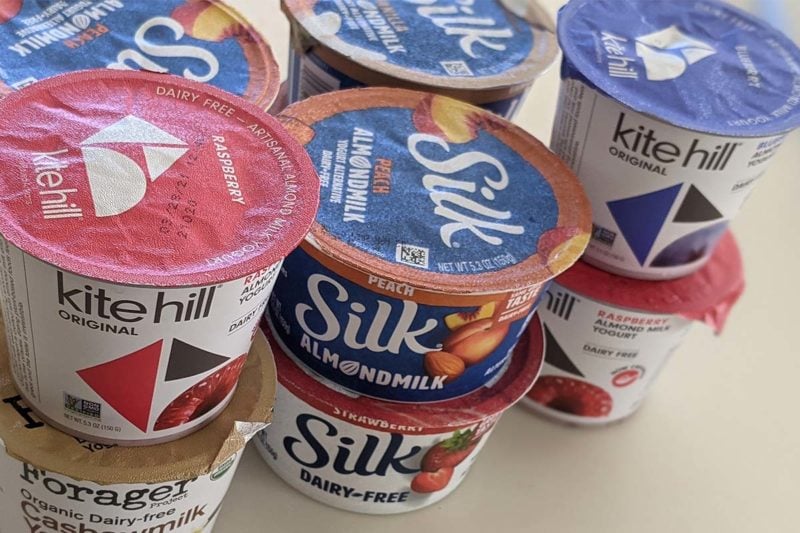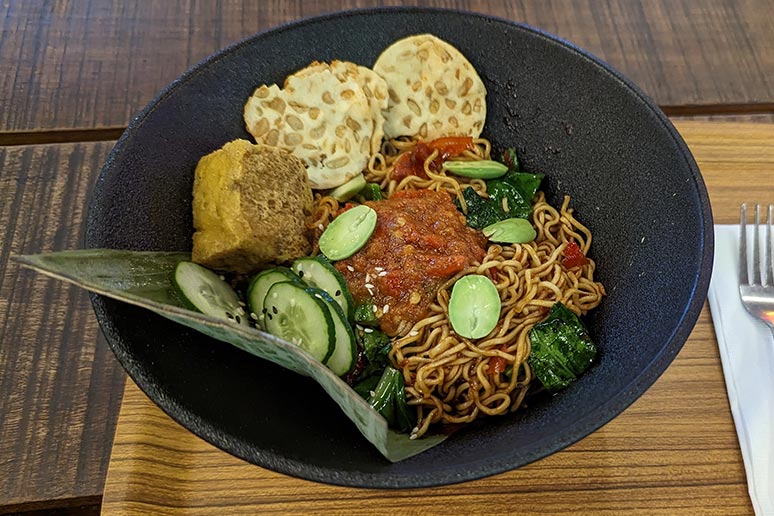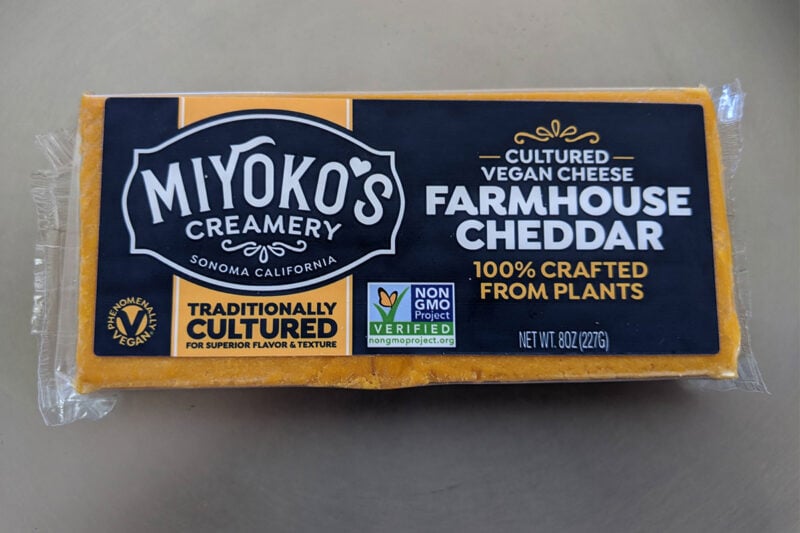Vegan Italian food offers an endless assortment of possibilities. Dominated by pasta, flavorful sauces, and seasonal vegetables, no cuisine is more vegan-friendly than Italian food. Whether you’re cooking at home or dining out, this guide will acquaint you with the very best vegan Italian dishes.
Vegan Italian Cooking
Spaghetti and tomato sauce is one of the world’s most popular meals. The low-rent version involves boiling up some spaghetti, nuking some jarred tomato sauce in the microwave, and then perhaps (if you’re not vegan) dusting your meal with some Kraft Parmesan cheese out of the shiny green can. The result might be tasty enough, but it’s no substitute for genuine Italian cooking.
Food and family are often inextricably linked, and that’s nowhere more the case than in Italy. Italian food doesn’t get more authentic than when it’s cooked by nonna (grandma) herself, for her large extended family. Italian food is generally easy to make, but it usually requires a lot of preliminary chopping and slow simmering. As a result, authentic Italian cooking lends itself especially well to preparing big batches for lots of people.
The meals nonna cooks for her family invariably take all afternoon to prepare. Authentic Italian sauces require patient cooking at low temperatures for hours. You can’t hurry along this sort of food without compromising the results. The saying “good things take time,” has never been more apt than when describing Italian food.
The Mexican Connection
Italian and Mexican food have much in common, especially where their healthfulness is concerned. Many of these cuisines’ classic dishes are loaded with vegetables and beans, and are therefore remarkably nutritious. Even better, many of the best-known meals from both cuisines are simple to prepare.
I regard Mexican and Italian food as two of the easiest cuisines for beginning cooks. But if I had to pick one, I’d recommend learning to cook Mexican food first. Mexican food usually takes less time to make than Italian food, especially if you’ve got a pressure cooker and use store-bought corn or wheat tortillas. Additionally, Mexican food puts a greater emphasis on beans than any other cuisine. Beans are remarkably nutritious and an important protein source for vegans.
But don’t let my comparison to Mexican food discourage you from delving into Italian cooking. Few cuisines offer so many enticing vegan possibilities. If you’re primarily looking for dining advice for ordering food at Italian restaurants, you can skip ahead to that section. But you may still want to read the following material on Italian cooking, as it will acquaint you with many classic dishes.
Cooking Vegan Italian Meals at Home
Italian cooking is so popular that most general-interest vegan cookbooks include at least a few classic Italian recipes. But if you love this cuisine and want to thoroughly explore it, you should pick up a vegan cookbook devoted to Italian cooking. There are several excellent ones:
- Veganissimo: Italian Vegan Cuisine, by Angelique Roussel
- Vegano Italiano, by Rosalba Gioffré
- Vegan Pizza, by Rosato, Barclay, & Evangelisti
- Discovering Vegan Italian, by Nadia Fragnito
- Accidentally Vegan Italian Soups, by Giovanni Caruso
- The Vegan Pasta Cookbook, by Rebecca Hincke
- Chloe’s Vegan Italian Kitchen, by Chloe Coscarelli
Together, these books demonstrate that Italian cooking stands head and shoulders above most cuisines, in terms of being easy to veganize without compromising on authentic flavors.

Finally, I must also recommend Nonna’s Italian Kitchen, simply on the basis that its Stuffed Crepes recipe (on p. 107) has become my mother’s go-to meal for special family gatherings. This recipe is certainly off the beaten path, but its combination of delicate crepes, creamy vegan ricotta, and tomato sauce makes for one of the most delicious casseroles I’ve ever eaten.
And of course, there’s also an abundance of vegan Italian recipes online. Start here:
Outfitting Your Kitchen
Even though it’s a highly-refined cuisine with centuries of tradition, Italian food requires minimal kitchen equipment. Here are the essentials:
- Cutting board
- Chef’s knife, paring knife, and bread knife
- Spatulas and wooden spoons
- Large kettle (for boiling pasta water)
- Saucepan (for making tomato sauce)
- Skillet (for sautéing onions, eggplant, and peppers)
- Baking sheets
- Pyrex oblong pan w/cover (for lasagna)
- Casserole dishes with glass lids (for baked ziti and manicotti)
As always, if you want to cook for large groups, a food processor will save you lots of time. And if you become obsessed with making Italian food (which often happens to people who’ve recently made a few outstanding dishes), you certainly ought to invest in a pasta machine.
If you want comprehensive advice on outfitting your kitchen, please see my kitchenware guide.
Key Italian Ingredients
Let’s now run through the most widely-used ingredients in Italian cooking. These include: nightshades, onions, garlic, olive oil, meats and cheeses, summer squash, fresh or dried herbs, balsamic vinegar, olives, and, of course, pasta. Getting familiar with each of these ingredients, and their vegan alternatives, is key to learning how to cook Italian dishes. So let’s dive in.
Pasta
Despite what you may have heard, indigenous arctic tribes don’t really have 500 words for snow. But Italians really do have an endless number of words for pasta, since the stuff takes every imaginable form. There’s of course spaghetti, which in Italy gets a number in ascending order of thickness (the most popular variety worldwide is #5 spaghetti). Close cousins of spaghetti are angel hair, linguine, and fettuccine. Angel hair is an especially thin noodle variety that cooks in just 2 minutes and absorbs a whole lot more sauce, thanks to its greater surface area. Linguine and fettuccine are both broad noodles that take longer than spaghetti to properly cook. Broader still are lasagna noodles, which are boiled and then baked into casseroles.
Then there’s the assortment of pasta that comes in small pieces like macaroni, cannelloni, penne, and rigatoni. And finally, there’s pasta meant to be stuffed with rich fillings: ravioli, tortellini, and their big brother manicotti.
Whatever its form, most pasta is made from dried white “semolina” or “durum” wheat flour. You can also purchase whole grain pasta made from wheat or other grains. These whole grain varieties are indisputably healthier than white pasta, but they also vary profoundly in quality. Some whole grain pastas are excellent while others are nearly inedible.
No coverage of pasta is complete without distinguishing between fresh and dried varieties. The dried stuff is sold on the shelf, whereas fresh pasta is either made at home or sold refrigerated. Dried pasta is imperishable prior to cooking, whereas fresh pasta must be eaten within a week or two of production.
Fresh Pasta
If you can get it, fresh is always better than dried—almost to the degree that freshly-baked pizza trounces frozen pizza. Fresh pasta carries subtle flavors that are lost during dehydration, and delivers a more satisfying texture. The problem for vegans is that while most dried pasta is free of animal products, nearly all fresh pasta contains egg. A few specialty food companies make fresh vegan linguine and ravioli—for several times the price of dried pasta. Despite the cost, if you want to truly experience what fine pasta is all about, you owe it to yourself to give fresh vegan pasta a try.
You can make fresh vegan pasta at home. But know that, as cooking projects go, it’s on the more advanced end of the spectrum. Here’s a well-written guide offering comprehensive directions for several varieties of homemade vegan pasta.

Don’t Neglect Dried Pasta
Although fresh pasta is always preferable, I’d never turn down the chance to eat dried pasta. It’s dirt-cheap, easy to cook, and the basis countless satisfying meals. If you want to eat healthfully, pasta is best thought of as a marinara sauce and grilled vegetable delivery vehicle, so you’ll get loads of flavor regardless of which variety of pasta you choose.
When cooking pasta, the package will tell you how many minutes it must be boiled. Every variety of pasta has different cooking times, which is determined by thickness. Pasta should be cooked in a large pot of salted water that’s reached a rolling boil. Cooking time typically ranges from a minute or two angel hair to around ten minutes for a thick linguini.
Fresh pasta requires only a fraction of the cooking time of dried pasta of equal thickness. Whichever pasta you choose, never overcook it, since mushy pasta is scarcely edible. Your goal is to stop cooking your pasta the moment it reaches al dente, which means that it stands up a little to your teeth (dente in Italian) when bitten. You can fish out a strand, rinse it with cold water, and bite to test for doneness. It so happens that a spaghetti strand cooked properly al dente will have liquefied just enough starch to stick to a Formica cupboard, if flung against it.
Tomatoes
Italian cuisine includes some of the most healthful meals on the planet. That’s largely because most dishes require plenty of fresh produce. Many of the quintessential Italian ingredients are in the nightshade family.
Of the nightshades, tomatoes are by far the most important, since it’s the foundation of most classic Italian dishes. Tomatoes are the primary ingredient of the classic marinara sauce that Italians pour onto their spaghetti. Nearly all pizza, lasagna, and manicotti likewise uses tomato sauce. Tomatoes come in a huge variety of sizes, shapes, and colors. Don’t shy away from buying yellow, purple, or even green tomatoes—they’ll often offer some of the richest flavors. Your local farmers’ market is the best place to find these exotic heirloom varieties.
Nothing compares to a marinara made from scratch from red, ripe tomatoes. Just as you can’t transmute lead into gold, there’s no way to turn mediocre tomatoes into a delicious marinara. So if good tomatoes aren’t available, canned sauce is preferable to making your sauce fresh from inferior tomatoes. That’s because you can always count on canned sauce being made from fresh, ripe tomatoes.
When you purchase your canned tomato sauce, always buy it unseasoned. Then add some fresh or dried herbs shortly before serving. You’ll get incomparably better flavor when you add your own herbs, since the high heat involved in canning destroys the nuanced flavors of pre-seasoned sauces.
Peppers
Italians are perhaps second only to Mexicans in their love for peppers. But unlike Mexican food—which makes heavy use of jalapenos, habaneros, and even the dreaded ghost pepper—Italians favor milder varieties of pepper. The “that’s a spicy meataball” joke notwithstanding, Italian cooking mostly avoids masochistic levels of heat.
The only Italian foods that are typically spicy-hot are meatballs and sausage. There are several spicy vegan sausages on the market. And if you crave additional heat, it’s easy enough to add some cayenne pepper or some minced hot peppers to your favorite Italian recipe.
Sliced cooked mild peppers go wonderfully with marinara sauce, either atop pizza or pasta. It’s a rare Italian casserole that doesn’t contain at least one variety of peppers. Additionally, most pizzerias put a big shaker of coarsely-ground dried red pepper on every table.
Eggplant
Eggplant is another key Italian ingredient from the nightshade family. Pan-fried eggplant is a wonderful addition to marinara sauce. It’s also delicious in lasagna. Eggplant’s starring role in Italian cooking, eggplant Parmesan, is a classic Italian casserole that’s readily made vegan—just replace the dairy-based Parmesan with a good vegan cheese.
Raw eggplant is one of the lowest calorie foods in existence. An entire kilogram contains just 240 calories, and you’d have to be deranged to eat that much eggplant. But nobody eats raw eggplant, and the stuff soaks up olive oil like a sponge during cooking. This means that many Italian dishes featuring eggplant are surprisingly high in calories. I always notice that I run through olive oil like crazy whenever I cook a lot of eggplant.
Onions and Garlic
Onions appear in seemingly every Italian dish. The classic Italian preparation method for onions is to slowly sauté chopped onions in olive oil over low-medium heat. They’ll gradually turn translucent and are perfect upon developing some brown caramelization. Figure it’ll take twenty minutes for your chopped onions to go from raw to perfectly cooked (the biggest lie in cooking is that you can brown onions in five minutes.) Chopping onions is a fundamental kitchen skill that’s crucial for a variety of cuisines. Plenty of YouTube videos demonstrate the right technique—here’s a great one.
Garlic is a cousin of onions and has such a strong, pungent flavor that it’s rarely eaten raw. It comes in a big white bulb, called a bug. You break off indivual cloves, each wrapped in a papery skin. Crush each clove using the flat of your chef’s knife, and its skin will peel right off.
The classic Italian preparation method involves skinning then mincing one to three cloves of garlic per serving of food. After that, sauté for a couple minutes in olive oil that’s just hot enough to bubble once the garlic is added. 30 seconds to a minute of sautéing is all the time it needs. Gently-fried garlic is incredible when stirred into marinara.
Also, don’t miss out on making roasted garlic. Roasting mellows garlic’s intensity, and imparts a rich, buttery texture. Roasted garlic is also less likely to destroy your breath than garlic prepared through other methods.
And of course, garlic is also the key ingredient in garlic bread, which just might be the world’s most underrated side dish. Absolutely nothing goes better with red wine. Garlic bread isn’t traditionally vegan but it’s easily made so by swapping out the butter with either olive oil or a good vegan butter.
Olive Oil
Wherever you go in the Mediterranean countryside, you’ll find row after row of olive trees. Many times, the olives from these trees don’t make it out of their nearby villages; they’re pressed into oil that’s sold to local residents.
Olive trees thrive in mild climates. Hotter and colder regions must import their olive oil, and more than two-thirds of the world’s supply comes from Spain, Italy, and Greece. It surprisingly tricky to reliably purchase good olive oil, since fraud is rampant in the olive oil trade. Much of this fraud arises from mafia involvement in the business. Companies frequently mislabel their bottles as a superior grade. Sometimes they will even add cheap vegetable oils to bottles that are purportedly 100% olive oil. One investigation found fraudulent labeling in more than half the olive oil brands tested in the United States. Here are some helpful tips for finding honestly labeled olive oil.
Like a Virgin
Assuming you’re not being tricked by a counterfeit product, the best olive oil is labeled “extra virgin.” That term signifies a low acidity, which in turn means that the olives were especially fresh when pressed into oil. It also means the oil is unadulterated with inferior chemically-extracted “second pressing” oil. In a word that properly respected the English language, “virginity” would be a binary thing—either it’s virgin or it’s not. But with olive oil, “extra virgin” denotes higher quality than mere “virgin.”
I can’t remember the last time I encountered plain old virgin olive oil— it seems bottled olive oil is either extra virgin or low-quality. So avoid any olive oil not carrying the word virgin on its label. There’s no good reason to purchase low quality olive oil. It’s much better to buy an inexpensive neutral-tasting vegetable oil (like safflower) than a low-quality olive oil for your general cooking needs.
Buying and Storing Unfiltered Olive Oil
The finest olive oil usually carries a couple more statements on its label. It will be “expeller pressed,” signifying oil extraction was done without chemicals. And it’ll also be unfiltered, which means the oil will be cloudy and carry more natural olive flavor.
Olive oil scorches at temperatures above medium heat, making it unsuited for high temperature cooking. Unfiltered olive oil breaks down at even lower temperatures than refined olive oil. That said, few authentic Italian dishes require high-temperature frying, so many Italian cooks use nothing but olive oil. Filtered extra virgin olive oil is excellent for moderate-temperature cooking, while unfiltered olive oil is an ideal dip for breads, or oil for salad dressing.
Like beer, olive oil breaks down and develops off flavors when exposed to heat or sunlight during storage. Also like beer, olive oil typically comes in both dark and clear bottles. It’s unwise to bottle olive oil or beer in green or clear glass, but it appeals to consumers ignorant of the degradation caused by light exposure. So buy your olive oil in either dark brown glass or in tins. Store your olive oil in a cool dark place but don’t refrigerate it, since the oil solidifies when chilled and becomes impossible to pour.
Meatballs
Since Italian cooking heavily features meatballs, this cuisine offers a great opportunity to explore vegan alternatives.
Many supermarkets and natural food stores carry frozen vegan meatballs in their refrigerated section. I’ve never had a frozen vegan meatball that was less than OK, but I’ve yet to find one worth raving about either. I regard the frozen brands as bland and generic, which is pretty much the opposite of what an Italian meatball should be. Vegan meatballs are easy to make in a food processor, and every vegan Italian cookbook features at least one good Italian meatball recipe.
Sausages
Spicy sausages are another favorite component in many Italian meals. Sausages are much harder to make than meatballs, since you must finely grind the ingredients and then stuff the mix into vegan sausage casings. All of this is too much work for me, but fortunately there are delicious vegan sausages produced by companies like Tofurky, Field Roast, No Evil Foods, and others.
The vegan chorizo sold by Trader Joe’s and other companies may technically be a Mexican style sausage, but its spiciness makes it ideal for a variety of vegan Italians dishes calling for ground chunky sausage.
If you’re willing to put in the time, you can make delicious vegan sausage from scratch. The vegan Italian cookbooks recommended earlier in this guide feature sausage recipes. And there’s an entire chapter devoted to sausage in Robin Asbell’s cookbook, Plant-Based Meats.
Cheeses
No cuisine more highly prizes artisan cheeses than does Italy’s. In this respect, if you’ve just begun exploring Italian cuisine, your timing couldn’t be better. Fantastic vegan cheeses were all but nonexistent before 2010 but now they’re everywhere.
Until recently, most vegan cheese products sought to replace the cheapest lowest-common-denominator cheeses—shredded mozzarella, blocks of cheddar, and American cheese slices. A serious Italian chef wouldn’t dream of using mass-produced cheeses. About their only use in Italian cooking is for pizza and casserole dishes.
But the latest generation of vegan cheeses competes with the good stuff, the sorts of locally-produced artisan cheeses that Italians favor. Premium vegan cheeses don’t come cheap since they are painstakingly cultured foods featuring high-quality ingredients. The best of these brands deliver all the exquisite flavor nuances of their artisan dairy-based counterparts.
As always, in the vegan world, you only find the best stuff by trying every product on the market. So why not make a point of buying a new vegan cheese every time you’re at your local natural food store? The more brands you try, the more likely you’ll find one or more that you love.
Vegan Parmesan Cheese
Perfectly-cooked spaghetti topped with freshly-made marinara sauce is undeniably delicious, and a dusting of Parmesan cheese seals the deal. But there’s no need for vegans to despair. Just sprinkle on a tablespoon or two of nutritional yeast and you’ll get a delightful flavor boost. Why does this work so well? Because the cheesy taste that people love doesn’t come from milk, but rather from the yeasts used to culture milk into cheese. And nutritional yeast has the core flavors that people know and love in their favorite cheeses.
If you want to get a little fancier, grind up a mix that’s half nutritional yeast and half walnuts. The ground walnuts will deliver the fatty mouthfeel of dairy-based cheese.
Additionally, several companies make vegan Parmesan cheese. Find it at your local natural foods store or on Amazon.com.
Squash
Italians eat loads of summer squash. That’s doubtless because, like grape vines and olive trees, squash thrives in Mediterranean climates. The most common summer squash is zucchini, which resembles a cucumber with lusterless skin. During peak growing season, just one plant will spit out a terrifying number of zucchinis, so in regions where it grows well gardeners have trouble even giving it away during the peak of the season.
There are a number of other summer squash that have either faint green or bright yellow skins. Despite their varying colors, they all taste and cook up exactly like zucchini. Remember that we eat with our eyes as much as with our mouths. So whenever possible, buy both green and yellow summer squash since the combination of colors will make your meal more visually enticing.
In contrast to zucchini and other summer squash, Italians don’t eat much in the way of hard winter squash. But they love to deep-fry pumpkin flowers, which are a brilliant orange-yellow. Groceries don’t sell pumpkin flowers because they wilt too quickly, but you can find them at farmer’s markets in late summer—no deep fried food has a more delicate texture.
Beans
If you’re new to Italian cooking, you’re in for a treat where beans are concerned. No cuisine features a wider variety of beans, many of which are practically unheard-of outside of Italy.
In particular, there are borlotti beans, which after cooking resemble Mexican pinto beans that just lost a bar fight. There are big white cannellini beans, that have a wonderfully creamy texture and commonly appear in soups and salads. And there are fava beans, which many Italians grow in their gardens, and that are commonly eaten raw when freshly picked. Once dried, you can cook favas in the same manner as any other large bean.
Lentils and garbanzos—two of the world’s most popular beans—also frequently appear in Italian cooking. If you want to learn more about Italian beans, here’s a terrific introduction to the topic. And if you’re new to cooking beans, don’t miss my beans guide.
Bean consumption would probably increase dramatically if only beans had a more beautiful name. In Italy, they do: it’s, fagioli. So keep an eye out for this word on Italian restaurant menus.
Herbs and Spices
Nearly every Italian dish incorporates plenty of herbs. In fact, it’s fair to assert that Italian cooking relies more heavily on herbs than does any other cuisine.
The key Italian herbs are oregano, basil, marjoram, thyme, rosemary, and sage. Italians don’t tend to mix these herbs together, and instead use just the one or two herbs that seem ideally suited for the dish.
Italian Seasoning
Outside of Italy many people cook with an Italian seasoning mix, which is basically a shotgun approach to Italian cooking that sacrifices authenticity for convenience. In the mother all ironies, nobody in Italy buys Italian seasoning mix! But it’s nevertheless a wonderfully convenient and flavorful spice mix for the casual cook.
Any good bulk department will carry a dried Italian seasoning mix, cheaper by far than the packaged brand at your supermarket. If you buy your Italian seasoning in bulk, transfer it to a jar when you get home to preserve freshness.
Every well-stocked pantry can benefit from a jar of Italian seasoning. The stuff is great in just about any recipe that features tomatoes. Also consider using this mix to liven up your general cooking. Italian herbs are a fantastic addition to such diverse dishes as stir-fried vegetables, tofu scramble, and home fried potatoes. An Italian seasoning blend is worth keeping on hand even if you never cook Italian food.
Whenever you add Italian seasoning to your food, always put it in your palm of your hand first, and then rub your palms together for a few seconds to slightly grind it. This will break apart the dried leaves, causing their oils to volatilize and thereby significantly boost flavor.
More Italian Herbs
On top of buying an Italian seasoning mix, you may also want to buy some dried oregano, which is probably the most popular of Italian herb. You can enjoy a nice change of pace to your Italian cooking by occasionally adding loads of oregano to your marinara sauce.
If you want to get truly gourmet, you can grow a collection of Italian herbs yourself in a windowsill herb garden, and then use scissors to snip what you need prior to cooking. Fresh herbs will take your dish’s flavor to the next level. But don’t neglect dried herbs, since they still pack plenty of great flavors and they don’t spoil.
Basil deserves a quick mention before we finish this discussion of herbs. It’s widely available fresh, and it’s terrific as one of your salad greens. Its most famous use is as the main ingredient of pesto. Just grind up some basil leaves along with some olive oil, pine nuts, nutritional yeast, salt, and loads of garlic. Pesto is fantastic both as a pasta topping and put between the layers of your favorite vegan lasagna recipe. And pizza topped with pesto and raw pine nuts is likewise memorable.
Italian cooking heavily emphasizes herbs, and comparatively ignores spices. The primary exception involves ground black peppercorns and ground dried red peppers, which are commonly sprinkled on pizza, pasta, and salads just before eating.
Balsamic Vinegar
Used motor oil and balsamic vinegar put side-by-side would be tough to tell apart. Balsamic vinegar is fundamentally different than any other sort of vinegar, and the good stuff can cost more than table wine. The definitive article on balsamic vinegar puts it like this:
Its flavor and the complex fragrance are exalted over its lowly cousin, red wine vinegar, just as red wine vinegar leaps ahead of white vinegar.
But even if you’re on a budget, you can certainly afford balsamic vinegar, since, like any other vinegar, a little goes a long way.
Balsamic vinegar comes from the pressings of two varieties of grapes. The juice is cultured by bacteria and then aged in wooden casks—sometimes for as many as twelve years. Many Italian marinades rely on balsamic vinegar. It’s also a fantastic seasoning for tofu, even though tofu never appears in traditional Italian cooking.
A mix of olive oil with a little balsamic vinegar is a classic dip for fresh bread. You can instantly make Italian dressing by combining three parts olive oil to one part balsamic vinegar, then throwing in some Italian seasoning. This homemade dressing will be better, fresher, and cheaper than any Italian dressing you could buy.
When buying balsamic vinegar, choose a brand that’s made in Modena (a city of Italy), or processed using Modena-style aging techniques.
Olives
More than a dozen varieties of olives are popular throughout Italy. About half the varieties are picked green and immature, and the other half are picked black and ripe. Regardless of ripeness, olives are inedible when picked. Before bringing them to market, producers soak them brine for weeks in order to leach out the tannins.
Some people never acquire a taste for olives, but that’s probably due to a lack of repeated exposure. If you’re new to olives, any high-end natural food store or grocery is likely to have an “olive bar” with a great variety of olives, plus some related foods like dolmas, roasted garlic, and pickled peppers. Why not fill a small container with a few olives of every type they’ve got, and then see which ones you like best? I’m partial to oil-cured black olives—they’re wrinkly and have an especially strong flavor.
Some olives are pitted and some are not, so for the sake of your molars, always pay attention to which is which. Italians like to eat olives on a platter alongside meat and cheese, and you could certainly make a similar vegan platter and perhaps accompany it with a glass of wine.
The most popular Italian tapenade (a ground vegetable paste usually spread onto bread) is made from olives and spices. But for my money, the best use of olives is to cut up four or five as a garnish for spaghetti and marinara sauce. This will taste incomparably better than a jarred sauce made with olives, since freshly-added olives possess a firmer texture and their salty zing hasn’t dissolved into the sauce.
Italian Dining
Given this article’s abundance of detail, I am sure that my love for Italian cooking is obvious. While some Italian dishes are time-consuming to prepare, no cuisine offers a greater diversity of vegan-friendly recipes.
That said, although Italian cooking is perfect for vegans wanting to discover new recipes, it’s a challenging cuisine when it comes to eating out. You’ve really only got a few choices, but at least these choices are easy to order, healthful, and delicious. While your dining options won’t be extensive, it’s good to know that every Italian restaurant offers a few delicious vegan meals. And that’s certainly more than you can say for several other cuisines.
You won’t find many all-vegan Italian restaurants outside of Italy, but they’re certainly well-worth seeking out. And you’ll certainly find that Italian dishes, of various levels of authenticity, are featured at a great many vegan restaurants.
Let’s now look at how to order at non-vegetarian Italian restaurants.

Vegan Pasta & Salad Choices at Italian Restaurants
Upscale Italian restaurants will typically serve fresh pasta made with egg. Fortunately, both spaghetti and angel hair are nearly always vegan, since they’re typically made using dried pasta. So at any Italian restaurant, you can reliably get a vegan plate of spaghetti with marinara sauce. Be sure to tell the waiter that you don’t want it sprinkled with Parmesan cheese. You should also be able to get some eggplant, mushrooms, zucchini, and olives in your sauce.
Salads are a big part of any proper Italian meal, so you shouldn’t have any problem ordering a big vegan salad. Unlike some other cultures, Italians don’t often junk up their salad with sliced meat or eggs. But you will still need to specify that you want a vegan dressing. To keep things reliably vegan, you can ask for olive oil and balsamic vinegar (some Italian dressings may contain mayonnaise). Also, the chef will toss usually some Parmesan cheese into your salad unless told otherwise. Croutons may or may not be vegan, and since it’s tough to know either way I request that they be left off.
That’s pretty much it for your options at a typical Italian restaurant, unless they serve pizza. At a good Italian restaurant or an independently-owned pizzeria, the dough will reliably be just white flour, sugar, yeast, water, and salt. But several large pizza chains put dairy products in their crusts. If you’re buying pizza from a chain restaurant, you can look up its dough and sauce ingredients on the company’s website.
Travel in Italy
Ironically, when visiting Italy, you may be happiest avoiding Italian-style restaurants, especially when it comes to fancier dining. Other cuisines, particularly Middle Eastern, usually give you much better vegan menu options. Rome has hundreds of non-Italian restaurants, and a great many vegan establishments as well. Outside of Rome, your restaurant selection will vary based on the size of the city, so you may have no foreign restaurant possibilities.
I consider Italy’s most exciting dining option to be its inexpensive pizzerias. Italy has two distinct types of pizza restaurants. The first is the fancier kind where you get a table and order a pizza for your group. The second kind of pizzeria is the grab-and-go type, often with no seating, that sells slices. It’s this sort of pizzeria that’s ideal for vegans, although they do operate differently from slice shops elsewhere in the world.
The most obvious difference is these Italian slice shops bake rectangular pies. And it turns out that, unlike Americans, Italians don’t view cheese as a mandatory pizza topping. In fact, some slices won’t have tomato sauce either. One popular pizza topping in Italy is nothing but potatoes, olive oil, and rosemary—and it’s delicious. You’ll find all sorts of other fantastic vegan toppings from eggplant to tomatoes to olives to spinach. Usually, about 40 percent of the pizzas at an Italian slice shop will be free of meat and cheese.
Italy’s slice shops charge by weight and not by the slice. So if you don’t speak Italian, you can point to the pie you want, hold up a couple fingers, and say, “vale due Euro” (two Euros’ worth).
Italian Bakeries
You’ll have sensational bread options when visiting Italy. The Italians are as passionate as the French about their breads and baked goods, and every local bakery sells delicious offerings. Two standouts are focaccia (pronounced foh-kah-chuh) and French-style baguettes.
If you’ve never eaten focaccia before, it’s basically pizza with a thicker, yeastier crust—something closer to Chicago-style pizza than New York. Even though focaccia is often topped with a small amount of cheese, many bakeries in Italy sell vegan focaccia. When I visited Genoa, the bakery down the hill sold focaccia more tasty than just about any pizza I’ve ever eaten. Their focaccia topping was just olive oil and onions, and yet the flavors were positively gourmet. A big slice set me back only a Euro or two, and it paired perfectly with a glass of red table wine.
Ice Cream
Ice cream was invented in Italy, and remains more popular there than anyplace on earth. The Italian variety of ice cream is called gelato, which has less cream than American-style ice cream and is made without eggs. Vegans are out of luck though, because gelato is still made from cow’s milk. In Italy’s big cities, you’ll encounter gelato shops on practically every corner.
Veganism is gaining popularity in Italy, and some of these gelato shops now offer dairy-free varieties. Italy still lags behind the USA and the UK when it comes to widely-available vegan ice cream, but I expect that gap to close in the years ahead.
Italian Cooking’s Larger Lesson
Italian food has so much more to teach us than simply how to make a satisfying ravioli or a delicious tapenade. Our ability to cultivate a positive relationship with food is supremely important, since the way we approach cooking ripples out to influence every part of our lives. How we eat and what we eat impacts our health, our family connections, our stress levels, and our happiness.
And in all these ways, where food is concerned, Italians have the right attitude. As processed convenience foods spread worldwide after the second World War, Italians turned their backs on these offerings and largely continued to eat in traditional ways.
Italians prioritize fresh locally-grown vegetables, slow cooking, and relaxed meals with family. You can use this attitude to inform you own cooking, no matter which of the world’s cuisines you gravitate toward.
The Italian approach to cooking offers benefits that extend far beyond nutrition. They’ve got a marvelous saying that embodies their relationship with food, “a tavola non si invecchia” (One does not age at the table). With that in mind, it’s incredibly fortunate that nearly every classic Italian dish lends itself so readily to vegan cooking.





